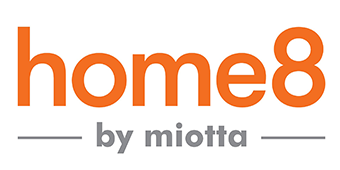News Source: Gear Diary, http://www.connectedhome.com.au/blogpost/smart-home-technology-ageing-in-place-make-perfect-partners//
BY: Jorge Perdomo July 14, 2017
By any measurement, the ageing-in-place trend – allowing seniors to live independently and safely in their own homes as long as possible – is picking up steam. Consider these facts:
There will be no shortage of candidates: According to a report from the Harvard Joint Centre for Housing Studies, by 2035 one in three U.S. households will be headed by someone 65 or older, versus today’s one in five. This will translate to an American population with one in five people over 65 – almost 80 million people – up from one in seven today. That’s an increase of more than 30 million people over the next 20 years.
They’re planning on it: According to HomeAdvisor, 61% of homeowners over the age of 55 are planning to stay in their homes indefinitely. Interestingly, HomeAdvisor found that homeowners over age 70 (77%) are more likely to want to stay in their homes than homeowners age 56-70 (56%).
They’ve got the money: A 2013 report from the U.S. Bureau of Labour Statistics estimates that 46% of homeowners aged 55 – 64 (and 72% aged 65 and over) own their homes without a mortgage, creating a considerable financial asset. This means there is also almost no financial barrier to remaining in their homes.
As mentioned earlier, ageing in place hinges on seniors being able to live in their homes safely. Making a home safe for an elderly resident can take many forms, including minor home modifications, such as grab bars and built-in shower seats, to more involved changes, such as widening doorways and lowering/raising kitchen countertops. These modifications are being sought after quite regularly. Over 75% of remodelers report an increase in inquiries for home modifications related to ageing in place. What’s more, the National Association of Home Builders predicts the ageing in place remodelling market to be worth $US20-$US25 billion ($A25.8-$A32.3 billion). That’s about 10% of the entire $US214 billion ($A276.8 billion) home improvement industry.
Another effective tool to allow ageing in place is smart home technology, which can provide solutions for homeowners looking to increase their safety, accessibility and ease of living.
Connected devices like panic and fall alerts can send a message to a caregiver if a senior falls in the home. Motion sensors can ensure that mom or dad gets out of bed. Sensors on the refrigerator can alert adult children to whether or not their parents are eating regularly. And the list goes on.
MivaTek offers its own elder care application, home8care, a mobile-interactive, video-verified care system that provides the user with critical healthcare and home-control applications, such as fall and panic alerts, medication adherence, pill dispenser, and activity tracking. Systems like home8care will not only help seniors live safely and comfortably, they can also provide caregivers and adult children with peace of mind that their loved ones are being protected 24/7.
The elderly population itself seems to embrace the idea of technology helping them to live independently. The HomeAdvisor report showed that two-thirds (67%) of homeowners over age 55 believe smart-home technology could help them age in place. Yet less than one in five (19%) have actually considered installing it for such purposes. Needless to say, there’s a sizable gap between the belief that the technology can help and actually purchasing it.
What are the reasons for this disconnect? Most experts believe that homeowners still think of smart home technology as a luxury convenience rather than a practical necessity. In fact, according to the report, the 81% of homeowners “who haven’t considered smart-home technology to assist them with ageing in place” cite as their most common reasons; that they don’t need/are not interested in such technology (45%), that it’s too expensive to purchase (29%) and that it’s too expensive to install (25%).
Does this sound familiar? It should, because it’s one of the primary reasons that smart home technology in general has not been adopted at the rate most experts and analysts predicted. It is seen as a convenience and a luxury but not as a means to truly improve homeowners’ lives by making them safer, saving them money through energy management and allowing them to create customised scenarios that fit their individual lifestyles. As an industry, smart home device designers, manufacturers and marketers have to point out these essential benefits – especially in the elder care market – to ensure that the mass adoption predicted by many experts actually comes to pass.



Get Social